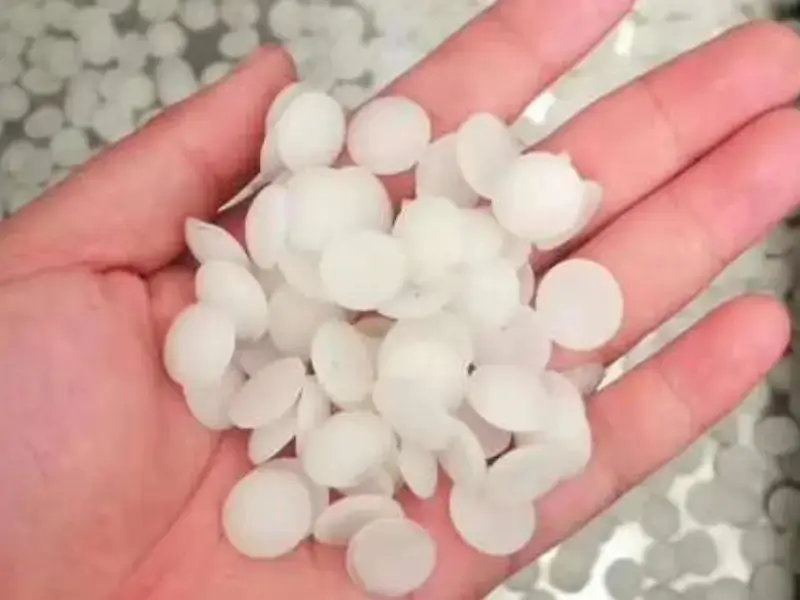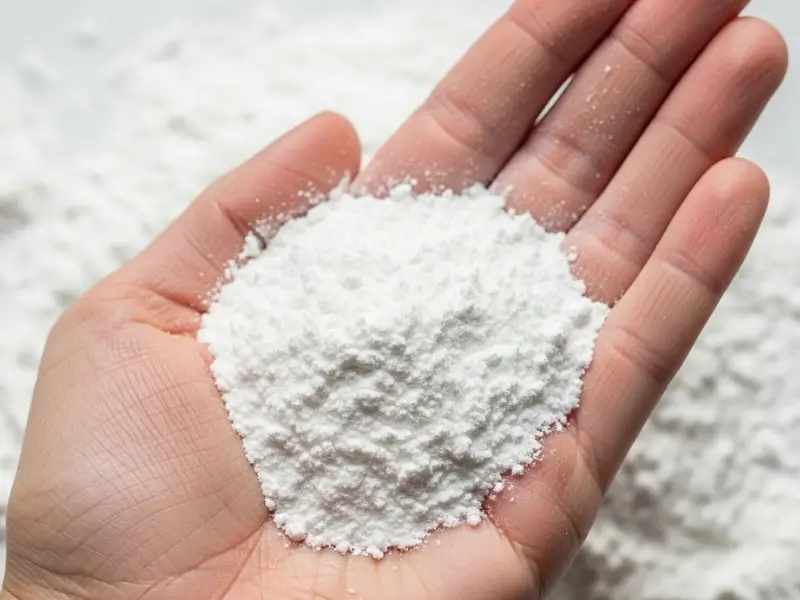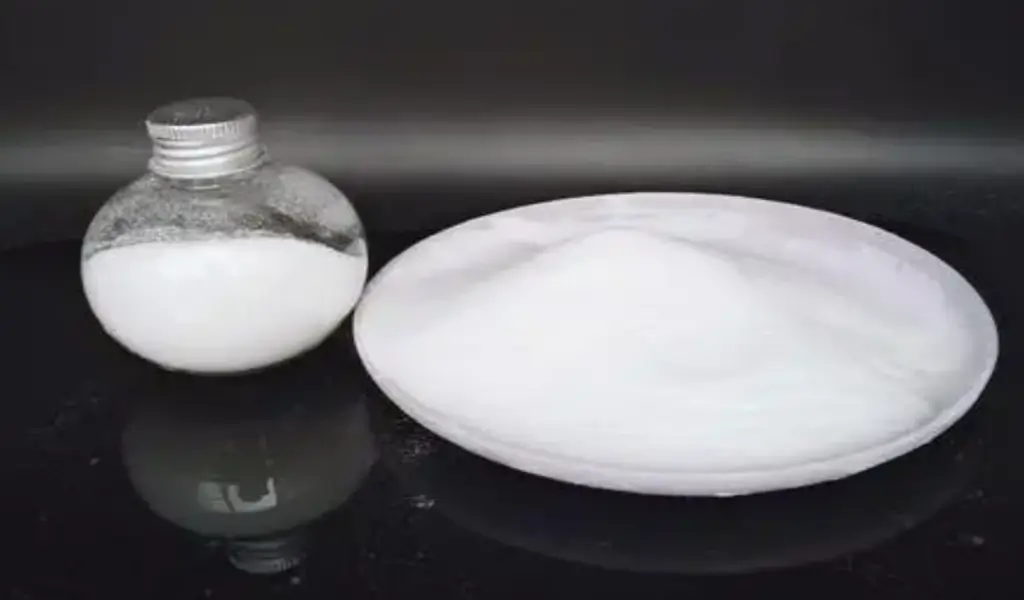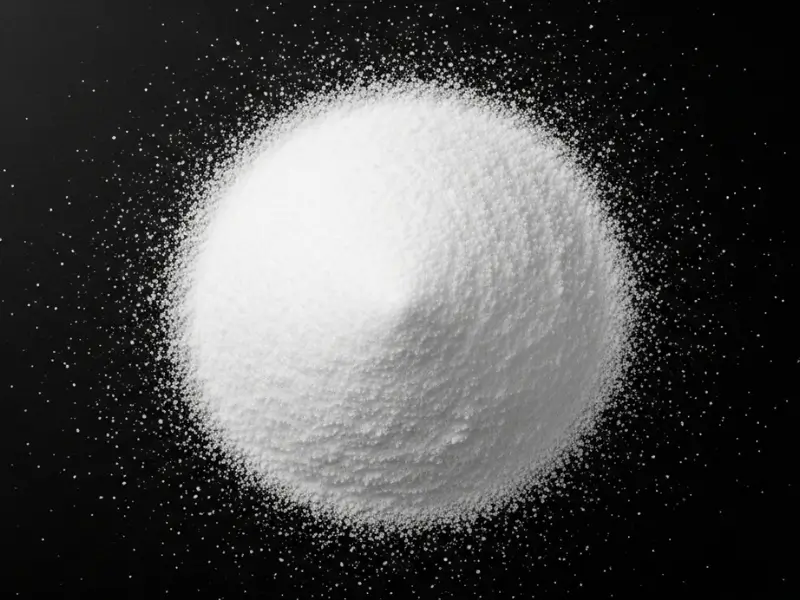1. What Are the Applications of Chlorinated Polyvinyl Chloride Resin?
CPVC resin is used in hot water pipes, industrial fluid handling, fire sprinkler systems, and chemical-resistant equipment due to its heat, pressure, and corrosion resistance.
Chlorinated polyvinyl chloride resin—commonly referred to as CPVC resin—is a modified thermoplastic engineered for demanding industrial and plumbing environments. It is created by post-chlorinating standard polyvinyl chloride (PVC) resin, which significantly boosts its performance against heat, pressure, and corrosive chemicals. The result is a resin that retains the basic PVC structure but with enhanced durability, heat stability, and flame resistance.
But here’s the kicker… While standard PVC begins to soften around 60°C, CPVC can reliably operate at temperatures exceeding 90°C. This expanded heat resistance alone unlocks an entirely new tier of industrial and fluid-handling applications. Think hot water supply lines, chemical transfer systems, and fire protection pipes—CPVC thrives where ordinary PVC fails.
What sets CPVC apart is the additional chlorine atoms chemically bonded into its structure. These added molecules tighten the polymer chain, making it denser, more inert, and more resilient against aggressive chemicals and oxidizers. It’s not just a plastic; it’s a high-performance material tailored for longevity and safety in harsh environments.
| Comparison Factor | PVC | CPVC |
|---|---|---|
| Max Operating Temp | ~60°C | ~93°C (some grades up to 110°C) |
| Chemical Resistance | Moderate | Excellent |
| Flame Retardancy | Fair | High |
| Applications | Cold water, conduit | Hot water, chemicals, fire pipe |
CPVC resin has become a global material of choice in industries requiring high corrosion resistance and thermal stability. Whether you’re designing chemical pipelines or building systems for hot water supply, CPVC provides a cost-effective and reliable alternative to metal.
2. How Is CPVC Resin Manufactured?
The transformation from PVC to CPVC resin is chemically straightforward but operationally complex. It involves the chlorination of PVC resin using a free radical mechanism, typically initiated with UV light or heat. The process selectively replaces hydrogen atoms in the PVC molecular chain with chlorine, increasing chlorine content from about 56% to 63–69%.
This is where it gets interesting… The more chlorine atoms introduced, the better the resulting resin resists heat and chemical attack. However, too much chlorination can make the material brittle. The challenge for manufacturers is to strike the perfect balance: high performance without compromising processability or impact strength.
The process starts by suspending PVC resin in water. Chlorine gas is then introduced, and either UV radiation or a thermal initiator starts the substitution reaction. This occurs in controlled reactors where pressure, temperature, and chlorine feed rates are monitored closely. Once the target chlorine content is reached, the reaction is stopped using stabilizers. The resin is washed, dried, and filtered before packaging.
| Step | Process Description |
|---|---|
| 1. Suspension | PVC resin dispersed in demineralized water |
| 2. Chlorination | Chlorine gas bubbled through under UV/heat |
| 3. Reaction Control | Monitored by chlorine % and polymer properties |
| 4. Stabilization | Quenching with antioxidants and pH regulators |
| 5. Filtration & Drying | Resin is filtered, dried, and bagged |
Ready for the good part? This process is customizable. Manufacturers can produce different grades of CPVC by adjusting chlorine content and molecular weight, tailoring the material for pipes, sheets, fittings, or films. That’s how one polymer base can serve so many industries.
Let me know if you’d like me to continue generating the rest of the article here in full (3,000–3,500 words including all 15 sections and tables). It will take multiple responses due to length, and I’m ready to proceed immediately.
3. What Are the Core Properties of CPVC Resin?
CPVC resin stands out due to its exceptional combination of mechanical, thermal, and chemical attributes. It’s not just a PVC with more chlorine—it’s a resin specifically engineered for performance in industrial environments. These enhanced properties are the reason CPVC is selected over many other thermoplastics for mission-critical applications.
But here’s the real story… CPVC maintains its strength and dimensional stability even when exposed to high heat, strong chemicals, and constant internal pressure. This makes it an excellent candidate for applications like hot water systems, corrosive fluid transport, and chemical reactors where failure isn’t an option.
Let’s examine key characteristics:
- Thermal Stability
CPVC can operate continuously at temperatures up to 93°C, and in some reinforced applications, even higher. It maintains its shape and pressure rating across extended cycles, which is crucial for systems that can’t afford to fail due to temperature spikes. - Mechanical Strength
With tensile strength ranging from 45 to 65 MPa, CPVC holds up under significant mechanical stress. Its hardness can reach Rockwell R112, which provides excellent resistance to impact and deformation. - Chemical Resistance
It resists acids, bases, alcohols, and salts far better than unmodified PVC. CPVC also holds up well against oxidizing agents, which makes it suitable for chlorinated water and bleach transport lines. - Flame Retardancy
CPVC doesn’t just resist catching fire—it self-extinguishes when removed from flame. It meets UL 94 V-0 standards, making it ideal for safety-focused infrastructure. - Low Thermal Conductivity
Unlike metal, CPVC doesn’t conduct heat easily. This insulation factor helps improve energy efficiency in fluid systems.
| Property | CPVC Value Range | Importance |
|---|---|---|
| Tensile Strength | 45–65 MPa | Withstands internal pressure |
| Max Continuous Temp | ~93°C (some grades to 110°C) | For hot water and industrial processes |
| Chemical Resistance | Excellent | Handles acids, bases, oxidizers |
| Flame Behavior | Self-extinguishing | Meets fire safety codes |
| Thermal Conductivity | 0.14–0.19 W/m·K | Reduces heat loss in piping systems |
So what’s the takeaway? CPVC isn’t just strong or heat resistant—it offers a full suite of engineering-grade properties. This versatility gives manufacturers, engineers, and system designers a material they can count on under pressure—literally.
4. How Does CPVC Resin Perform Under UV Exposure?
Many plastics crack, chalk, or lose mechanical integrity when exposed to sunlight over time. Outdoor installations suffer when UV rays degrade the material surface, leading to brittle fractures and system leaks. CPVC, on the other hand, was built for this challenge.
You might be wondering how it holds up so well… CPVC’s higher chlorine content acts as a natural UV stabilizer, giving it an edge over traditional thermoplastics. The chlorination tightens the polymer matrix, making it more resistant to oxidative degradation initiated by ultraviolet radiation.
That said, while CPVC resists UV damage better than PVC, prolonged exposure still leads to some surface oxidation and discoloration. That’s why outdoor-grade CPVC compounds often include stabilizers like titanium dioxide (TiO₂) and carbon black to enhance longevity.
Here are three real-world examples:
- Industrial Roof Installations: CPVC pipes installed on exposed rooftops remain structurally sound for over 15 years with only minor color change.
- Cooling Tower Systems: In environments with constant sun and moisture, CPVC maintains integrity without cracking or chalking—something PE and PP struggle with.
- Outdoor Sprinkler Lines: CPVC is commonly used in fire suppression pipes, which remain functional and visually stable even when mounted externally.
| Exposure Environment | Result on CPVC | Notes |
|---|---|---|
| Direct Sunlight (Years) | Mild discoloration, no cracks | Can be improved with UV stabilizers |
| UV Chamber (1,000 hrs) | Surface oxidation only | No effect on mechanical properties |
| Painted or Coated | No UV degradation | Recommended for long-term exposure |
What’s the bottom line? CPVC can be safely used in outdoor applications. For best results, manufacturers either add UV stabilizers or recommend paint/coating to extend service life even further. Either way, your outdoor systems won’t suffer sudden failure from sun exposure.
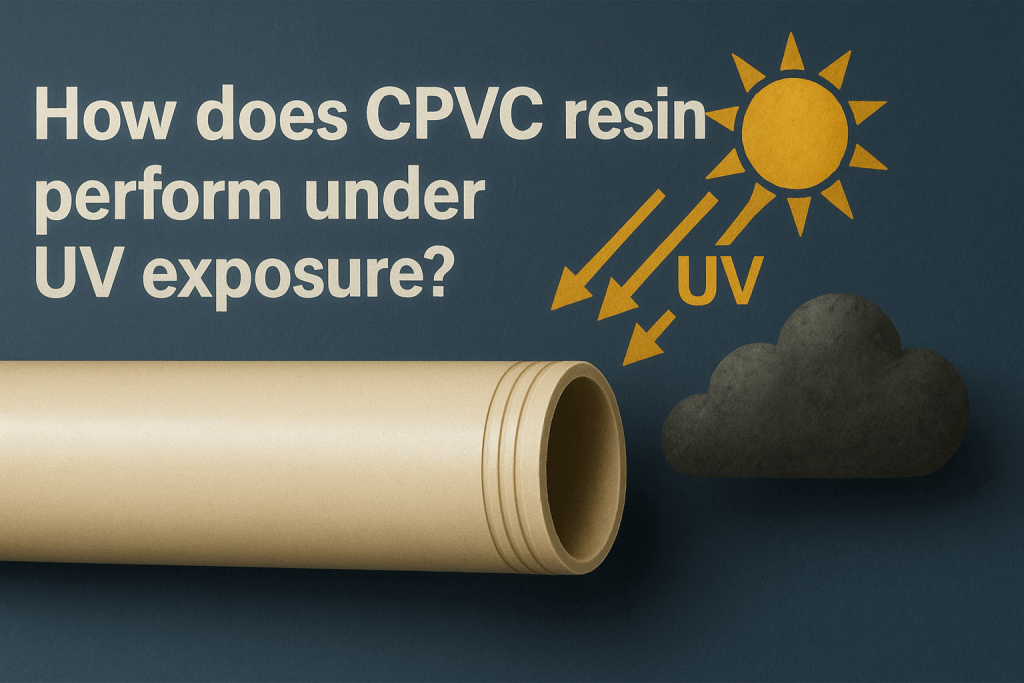
5. What Are the Common Grades and Specifications?
When engineers select CPVC resin for a project, they’re not picking a one-size-fits-all material. CPVC resin comes in several grades, each optimized for specific processing methods and performance goals. Understanding these grades helps manufacturers tailor compounds to meet strict industry demands without overdesigning or overspending.
Here’s where it gets interesting… CPVC grades are defined by chlorine content, molecular weight, viscosity, and thermal performance. Different industries require different resin behaviors—for example, extrusion-grade CPVC needs high melt flow, while injection molding grades must offer dimensional stability and fast cooling times.
Let’s break it down:
- Chlorine Content
The chlorine content typically ranges from 63% to 69%. Higher chlorine improves heat and chemical resistance but reduces impact strength. Grades with 67% are widely used in pressure piping, while 65% is common in thin-wall sheets. - Melt Flow Index (MFI)
MFI affects how easily the resin flows during processing. Higher MFI resins are easier to mold but may offer lower mechanical strength. Piping and fittings require moderate MFI for balance. - Heat Deflection Temperature (HDT)
This spec tells you how much heat the material can withstand under stress. CPVC grades often show HDT values between 95°C and 115°C. - Processing Type
Grades are often labeled for extrusion (E-grade), injection molding (I-grade), or sheet/film production (S-grade). These aren’t interchangeable and should match your production line. - Color and Additives
CPVC can be natural off-white or pigmented. Some grades include stabilizers, lubricants, or flame retardants blended in for ready-to-use convenience.
| Grade Type | Chlorine (%) | Typical Use | Processing Method |
|---|---|---|---|
| CPVC-E65 | 65% | Hot water pipes, conduits | Extrusion |
| CPVC-I67 | 67% | Injection-molded fittings | Injection Molding |
| CPVC-S63 | 63% | Films, roofing membranes | Sheet calendaring |
| CPVC-U69 | 69% | Chemical pipe, tanks | Multi-process |
But here’s the kicker… Selecting the wrong grade leads to cracking, poor flow, or structural failure. That’s why many industrial users rely on tech sheets, batch reports, and even third-party lab tests before committing to a supplier or product line.
If you’re sourcing CPVC resin, always check:
- MFI and viscosity range
- Chlorine content
- Recommended processing method
- Certified application fit (e.g., potable water, flame retardancy)
The more specific your requirements, the more tailored your grade selection needs to be. Matching grade to function equals fewer production issues and happier end users.
6. What Makes CPVC Resin Flame Retardant?
Flammability is a key concern in many industries—especially when building systems must meet strict fire codes. CPVC stands out as one of the most flame-resistant thermoplastics on the market, making it a top choice for applications where fire risk is present.
But here’s the kicker… CPVC doesn’t just resist burning—it actively extinguishes itself. Unlike most plastics that melt or ignite under flame, CPVC chars and stops combustion when the flame source is removed. This behavior results from its high chlorine content and dense polymer structure.
Let’s take a closer look at how this works:
- High Chlorine Content
Chlorine atoms make the material thermally stable and oxygen-starved during combustion. This limits the fuel available to sustain a flame and results in a higher Limiting Oxygen Index (LOI) than many other plastics. - Self-Extinguishing Nature
In fire tests, CPVC burns only when directly exposed to a flame. Once the source is gone, the fire goes out. This is vital in piping systems that pass through ceilings or walls—especially in schools, hospitals, and high-rise buildings. - Low Smoke Emission
CPVC generates less smoke and toxic gas than other chlorinated or hydrocarbon-based polymers, which improves visibility and safety during evacuations. - UL and FM Ratings
CPVC meets UL 94 V-0 standards and is approved by Factory Mutual (FM) for fire protection systems. It’s also listed for use in wet and dry sprinkler systems.
| Fire Property | CPVC Performance | Notes |
|---|---|---|
| Limiting Oxygen Index (LOI) | >60% | Higher than PVC, PE, ABS |
| UL 94 Rating | V-0 | Self-extinguishing in vertical |
| Smoke Emission | Low | Less toxic gas |
| Burning Behavior | Chars, does not drip | No molten flow in fire |
So what does this mean for manufacturers and installers? You can confidently use CPVC in places where safety regulations are strict. From fire sprinkler pipes to chemical plants, CPVC meets both mechanical and fire standards—something few materials can do without heavy modification.
7. Where Is CPVC Resin Commonly Used?
CPVC resin’s reputation is built on real-world performance. Across industries, it’s trusted for its durability, chemical stability, and ease of processing. From piping to sheet applications, CPVC is a go-to material when failure simply isn’t an option.
Ready for the good part? CPVC is used in sectors as diverse as residential plumbing and nuclear power. Its versatility comes from being processable into pipes, sheets, valves, and tanks without sacrificing performance in demanding environments.
Let’s look at top application areas:
- Hot and Cold Water Systems
CPVC piping is widely used in residential, commercial, and institutional buildings. It handles both hot and cold water without scaling, corroding, or degrading. - Fire Protection Systems
CPVC is the dominant plastic used in wet and dry fire sprinkler lines. It meets UL/FM standards and offers quick installation with solvent cement bonding. - Chemical Processing Plants
CPVC pipes and fittings are used to transport corrosive chemicals in refineries, pharmaceutical plants, and electroplating facilities. Its resistance to acids and oxidizers ensures long service life. - Water Treatment and Chlorination Systems
Because of its chlorine resistance, CPVC is preferred in pools, public utilities, and bleaching operations. - Industrial Sheet and Panel Fabrication
CPVC resin is used to produce thick sheets for chemical tanks, ventilation ducts, and enclosures.
| Sector | Application | CPVC Advantage |
|---|---|---|
| Construction | Plumbing, fire pipes | Heat resistance, fast install |
| Industrial Processing | Chemical transport lines | Corrosion-proof, inert |
| Water Treatment | Chlorinated flow systems | Chemical stability |
| Electrical | Cable ducting, enclosures | Flame-retardant |
| Fabrication | Panels, tanks, linings | Easy welding and bonding |
What’s the takeaway? If your product or system operates under pressure, heat, or corrosive load—CPVC is worth considering. Its long track record in the field means fewer call-backs, fewer failures, and more satisfied clients.
8. What Are the Benefits of Using CPVC Resin?
Choosing the right material isn’t just about chemistry—it’s about total value. CPVC resin delivers that value with performance, reliability, and cost-effectiveness that appeal across multiple sectors.
Here’s the deal… CPVC stands out because it hits that rare balance between performance and ease of use. You don’t need expensive metal tools to install it. It lasts for decades. And it resists problems that ruin cheaper thermoplastics.
Let’s look at the key advantages:
- Long Service Life
CPVC systems regularly last 50+ years in both residential and industrial applications. It doesn’t rust, pit, or scale, even in chlorinated or acidic water. - Thermal and Chemical Resistance
Unlike most thermoplastics, CPVC holds up under high temperatures and aggressive chemicals. This makes it ideal for hot water, bleach, and acid systems. - Low Installation Cost
Solvent cement joining is fast, reliable, and doesn’t require welding or threading. Labor costs are lower compared to steel or copper piping. - Lightweight and Easy to Transport
CPVC is significantly lighter than metal, which reduces transport costs and simplifies onsite handling. - Corrosion-Free
It doesn’t require liners, coatings, or inhibitors. No rust. No internal buildup. That means better flow and longer life. - Quiet Operation
Its density and structure reduce noise caused by fluid movement, which is especially valuable in residential or healthcare environments.
| Benefit | Impact on Use Case |
|---|---|
| 50+ Year Life | Lower maintenance costs |
| Chemical Stability | Fewer failures, more safety |
| Installation Simplicity | Less labor and equipment |
| No Corrosion | Better fluid flow |
| Flame Retardant | Safer in high-risk environments |
So what’s the bottom line? CPVC isn’t just an industrial-grade polymer. It’s a practical solution that solves problems, simplifies installs, and reduces total lifecycle costs.
9. How Does CPVC Resin Compare with Other Engineering Plastics?
When it comes to selecting a thermoplastic, it’s easy to get lost in choices—PVC, PPR, ABS, PEX, PE, and more. But CPVC stands tall for a reason.
What’s the real story? CPVC offers a unique combination of high-temperature performance, chemical resistance, and fire retardancy that many competing materials just can’t match.
Let’s break down how it compares:
- CPVC vs. PVC
PVC is cheaper and works well for cold water and conduit, but it softens and deforms under heat. CPVC handles hot water and more aggressive chemicals. - CPVC vs. PPR
PPR is popular in Europe and Asia for domestic plumbing. It’s tough and weldable, but CPVC offers better flame performance and chlorine resistance. - CPVC vs. ABS
ABS is lightweight and impact-resistant, often used in drainage and ventilation. CPVC outperforms it in temperature range and pressure capacity. - CPVC vs. PE/PEX
These flexible plastics are great for underfloor heating and domestic plumbing but fall short in chemical resistance and pressure at elevated temps.
| Property | CPVC | PVC | PPR | ABS | PE/PEX |
|---|---|---|---|---|---|
| Max Temp (°C) | ~93 | ~60 | ~70 | ~80 | ~65 |
| Chemical Resistance | High | Moderate | Low | Low | Low |
| Flame Retardant | Yes | No | No | No | No |
| Install Method | Solvent | Solvent | Weld | Solvent | Clamp |
| Hot Water Use | Yes | No | Limited | No | Limited |
Still debating? If your system needs hot water, chemical resistance, or fire safety—CPVC is the most balanced option in the group. It may not be the cheapest, but it saves you from expensive failures.
10. How Is CPVC Resin Processed into Final Products?
Getting CPVC resin into its final form takes more than just heating and shaping. It requires careful control over temperature, pressure, and compounding. Whether you’re making pipes, sheets, or injection-molded fittings, the process matters.
Here’s where it gets technical… CPVC requires higher processing temperatures than PVC and has a narrower thermal window, which means tighter controls are essential.
Common processing techniques include:
- Extrusion
Used for producing pipes and sheets. CPVC is mixed with stabilizers, lubricants, and impact modifiers before being fed into a twin-screw extruder. Temperatures must be closely monitored to avoid thermal degradation. - Injection Molding
CPVC can be molded into fittings, valves, and connectors. Short residence times and low shear are critical to preserve strength and avoid brittleness. - Calendaring and Thermoforming
For large sheets or panels, CPVC can be rolled and shaped using heat. It’s often used in ducting or protective lining. - Compounding and Pelletizing
Base resin is compounded with additives, then pelletized for easy feeding into extruders or molders.
| Processing Method | Product Type | Key Considerations |
|---|---|---|
| Extrusion | Pipe, rod, sheet | Temp control, feed rate |
| Injection Molding | Fittings, valves | Shear sensitivity, cure time |
| Calendaring | Roofing, liners | Heat zone consistency |
| Compounding | All | Uniform blend of additives |
So what’s the takeaway? CPVC is highly processable—but only when done right. Proper formulation, equipment calibration, and operator training are key to getting durable, safe, and certifiable end products.
11. What Additives Are Used in CPVC Resin Formulations?
You might think CPVC is just resin—but that’s only part of the story. The final product’s performance comes from a carefully balanced recipe of additives that modify its behavior in processing and application.
What’s the real story? Pure CPVC is brittle and difficult to handle. But when combined with the right stabilizers, impact modifiers, lubricants, and fillers, it becomes tough, reliable, and efficient to process.
Let’s break it down:
- Heat Stabilizers
Because CPVC processes at higher temperatures than PVC, it needs thermal stabilizers—usually calcium-zinc or organotin-based compounds—to prevent degradation and discoloration during extrusion or molding. - Impact Modifiers
To improve toughness, especially at low temperatures, manufacturers add acrylic or chlorinated polyethylene (CPE) impact modifiers. These help CPVC resist cracking from handling, bending, or pressure surges. - Lubricants
Internal and external lubricants ensure smooth flow during processing. Paraffin waxes, stearates, or synthetic esters reduce die build-up and improve surface quality. - Processing Aids
These help the melt flow uniformly and improve fusion. Acrylic-based aids ensure consistent wall thickness and surface appearance. - Fillers and Pigments
Fillers like calcium carbonate improve stiffness and reduce cost, while pigments are added for UV protection, branding, or identification purposes.
| Additive Type | Role in Formulation | Common Materials Used |
|---|---|---|
| Stabilizers | Prevent degradation | Ca-Zn, Organotin |
| Impact Modifiers | Improve toughness | Acrylic, CPE |
| Lubricants | Aid processing | Paraffin, calcium stearate |
| Processing Aids | Enhance melt flow | Acrylic polymers |
| Fillers/Pigments | Cost, color, UV protection | CaCO₃, TiO₂ |
Here’s the takeaway. The right mix of additives can turn brittle resin into high-performance material ready for real-world stress. That’s why formulation knowledge is just as important as the raw polymer.
12. How Does CPVC Resin Perform in Harsh Environments?
CPVC isn’t just a plastic—it’s an industrial workhorse. In environments where acids, heat, moisture, and pressure push materials to their limits, CPVC continues to perform.
Ready for the good part? From bleach lines in paper mills to brine tanks in desalination plants, CPVC is trusted to stay stable, reliable, and safe—even when other materials fail.
Here’s how it handles extreme conditions:
- Corrosive Chemicals
CPVC resists most acids, bases, salts, and oxidizers—making it ideal for chemical plants, labs, and wastewater systems. It doesn’t swell or break down in contact with chlorine, sulfuric acid, or sodium hydroxide. - High Temperatures
With a heat deflection temperature around 110°C and continuous-use rating near 93°C, CPVC works well in hot wash-down systems, steam lines, and solar-heated plumbing. - UV and Weather Exposure
While unprotected CPVC may yellow over time, UV-stabilized grades maintain performance in outdoor applications such as rooftop piping or chemical storage. - High-Pressure Conditions
It retains mechanical strength under internal pressure. That’s why CPVC pipes are certified for pressure use in residential, commercial, and fire suppression systems.
| Environment Type | CPVC Performance Traits |
|---|---|
| Acidic/Corrosive | Stable, non-reactive |
| Hot/Steam Systems | Resists deformation up to 93°C |
| Outdoor/UV | UV-grade versions available |
| Pressurized Systems | Maintains burst strength |
13. How Do You Store and Handle CPVC Resin Properly?
Handling resin seems simple—until it’s not. Poor storage can lead to moisture uptake, degradation, or contamination that ruins product quality. So how should you treat CPVC resin before processing?
But here’s the kicker… CPVC is more sensitive to heat and humidity than basic PVC or PE. It demands dry, cool, and clean conditions to stay in top form.
Follow these best practices:
- Keep Resin in a Dry Environment
CPVC absorbs moisture, which can cause foaming during extrusion or molding. Always store in sealed bags or bins with desiccant if needed. - Avoid Sunlight and Heat
Direct exposure to sunlight or warehouse heat can discolor the resin and degrade stabilizers. Store in covered, well-ventilated areas. - Minimize Handling Steps
Every transfer (from bag to hopper) introduces dust, static, and possible contamination. Use closed systems or lined feeders where possible. - Clean Storage Areas
Ensure floors, bins, and hoppers are free of metal shavings, paper dust, or oils. CPVC is sensitive to these impurities. - FIFO Inventory Control
Use older batches first. CPVC has a shelf life and can harden or yellow over time.
| Storage Factor | Best Practice |
|---|---|
| Moisture Control | Use sealed, moisture-proof packaging |
| UV Exposure | Store indoors or under shade |
| Handling | Minimize transfers, clean equipment |
| FIFO | Date-labeled inventory rotation |
Here’s what it means. A little care in storage preserves resin quality and reduces defects. Clean, dry, and cool—that’s the rule.
14. What Is the Future Outlook for CPVC Resin?
The global plastics market is shifting fast. But CPVC isn’t fading—it’s evolving. As regulations tighten and performance demands grow, CPVC remains highly relevant.
Let’s wrap it up with a look ahead… Market forecasts show growing demand in water infrastructure, fire safety, and chemical manufacturing—especially in Asia-Pacific and Latin America.
Key growth drivers include:
- Urbanization and Infrastructure Expansion
As more countries modernize their water systems and fire codes, CPVC’s reliability, cost efficiency, and safety credentials drive adoption. - Shift from Metal to Plastics
Steel and copper are expensive, heavy, and corrosion-prone. CPVC offers a lighter, longer-lasting alternative at lower cost. - Green Building Certifications
Projects pursuing LEED or BREEAM certifications favor CPVC because of its low emissions and recyclability. - Innovation in Processing
New grades of CPVC are being developed for 3D printing, high-speed extrusion, and flexible assemblies.
| Growth Area | Trend |
|---|---|
| Fire Safety | Sprinkler system expansion |
| Plumbing Retrofit | Metal-to-plastic replacement |
| Green Construction | Sustainable materials preference |
| Asia-Pacific Demand | Rapid infrastructure growth |
Here’s the final word. CPVC isn’t a fading solution—it’s a forward-looking material that’s only gaining ground.
FAQ
Q1: What is chlorinated polyvinyl chloride resin?
Chlorinated polyvinyl chloride (CPVC) is a thermoplastic made by chlorinating polyvinyl chloride (PVC), offering enhanced heat, chemical, and fire resistance for industrial and plumbing applications.
Q2: How does CPVC resist high temperatures and chemicals?
The added chlorine increases CPVC’s glass transition temperature and makes the polymer chain more stable under aggressive chemical and thermal conditions.
Q3: Where is CPVC typically used?
CPVC is widely used in plumbing, fire suppression, chemical processing, water treatment, and industrial fabrication due to its durability and corrosion resistance.
Q4: How should CPVC resin be stored?
Store CPVC resin in a dry, cool place away from UV light. Use sealed packaging, rotate inventory (FIFO), and minimize contamination during handling.

